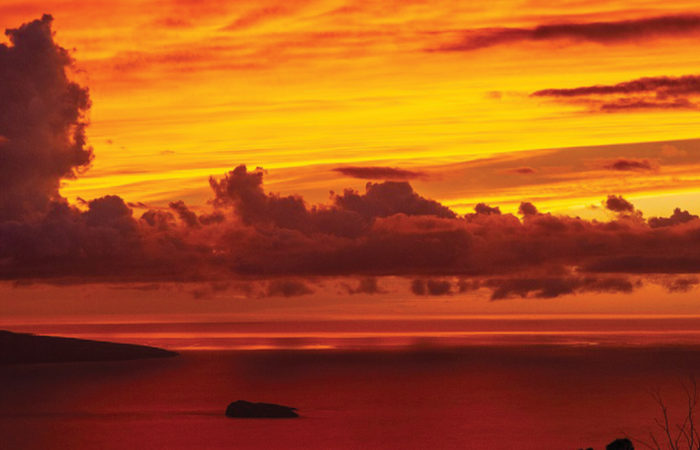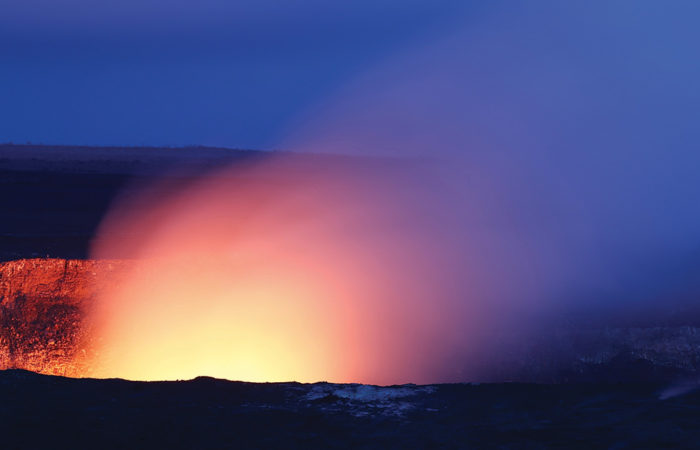Since the overthrow of 1898 led by influential American businessmen including Sanford Dole of Dole plc backed by the United States Navy and Marine Corps, the people of Hawai’i have continually fought for self-determination and the ability to live like their kūpuna have for countless generations before them. Despite harmful stereotypes of Pacific Islanders being lazy and violent, Kanaka Maoli activism is rooted in nonviolent resistance that can be seen dating to at least the overthrow of her majesty, Queen Lili’uokalani who, “urged her supporters not to act violently against the revolutionaries,” to spare any bloodshed and to protect her people. In response, those who opposed the recently declared, “Republic of Hawai’i” wrote fervently in newspapers, organized large gatherings of Kanaka Maoli, and composed many songs reaffirming their genealogies, heritage, and dedication to the Kingdom of Hawai’i. It was during this time in her first imprisonment at Iolani Palace that Queen Lili’uokalani composed her famous magnum opus, “Aloha ‘Oe.” This is just one example of how ingrained traditional cultural practices and nonviolent resistance are within Kanaka Maoli activism.
After the illegal overthrow of Hawai’i, the Queen agreed to cede Hawaiian Crown Lands — Hawai’i’s most sacred sites — so long as they were to be of the benefit of the lāhui — its people. The State of Hawai’i began leasing Hawaiian Crown Lands in the 1960s, leading to the construction of 13 telescopes on Mauna a Wākea’s summit, countless resorts and hotels, and entire islands dedicated to US military operations. This has led to the current situation with Kanaka Maoli kia’i and their allies protecting the sacred through venerating it. In 1995, “the Hawai’i State Supreme Court ruled in Public Access Shoreline Hawai’i v. Hawai’i County Planning Commission, commonly referred to as the PASH decision, that the state had a duty to protect all customary and traditional Native Hawaiian rights exercised for cultural, religious, and subsistence purposes,” this created a legal loophole that has proved invaluable for Kanaka Maoli activists and cultural practitioners alike. The PASH decision has allowed for Kanaka Maoli to rekindle connections with past ancestors and gods on sacred lands that were otherwise inaccessible or off-limits to the general public. For example, much of the land surrounding Mauna a Wākea on Hawai’i Island is actually part of the Pohakuloa Training Field. The US Air Force runs routine drills destroying the land that is deemed sacred to many in Hawai’i, as the islands are “elder relatives of Kanaka Maoli,” in Ho’omana Hawai’i. This relation to space and place not only as physical manifestations of the world, but as direct ancestors of Kanaka Maoli explains why Aloha ‘Āina [ land stewardship ] is central to not only ho’omana but also activism. For this reason, Kanaka Maoli activism is intrinsically linked to the spiritual experience of caring for the land, future generations of lāhui, and perpetuating the culture of Kānaka Maoli. Marie Alohalani Brown notes how these relationships have always existed in Hawai’i, “spirituality has always been and continues to be tied to the ‘āina, but it was also and continues to be tied to politics—now a clash between settler and indigenous values and politics of place.”
Queen Lili’uokalani and her cousin before her, David Kalākaua used their dwindling political power to reaffirm what was left of Ho’omana Hawai’i before its overthrow. Kalākaua, also known as the Merrie Monarch, and Lili’uokalani are both celebrated often within activist and spiritual settings — often these two overlap. They also dedicated royal funds towards the preservation of key texts that might not have survived otherwise, including the creation chant: Kumulipo. It is in Kumulipo that it is established that, “Kalākaua and Lili’uokalani, and by extension the entire lāhui,” are linked, “genealogically to the god Māui, and further, to the goddess (es) Haumea/Papa, the god/first man Wākea, the taro Hāloa, and the plants of the earth, and the stars in the heavens,” this common link is a powerful tool for organizing a people dispossessed of many of their sacred sites and centers (piko). Not only does this allow those who know their entire genealogies to dedicate themselves to Ho’omana Hawai’i, but those who have no physical connection to the space or place of Mauna a Wākea know that they spiritually descend from its summit. The gods, demigods, and ancestors deified in the Kumulipo were once living Kanaka Maoli themselves. This parallel is drawn from the story of Wākea and the understanding that Mary Kawena Pukui provides of aumākua [ ancestor gods ]:
In Pō there dwell our ancestors, transfigured into gods. They are forever god-spirits, possessing the strange and awesome powers of gods. Yet they are forever our relatives, having for us the loving concern a mother feels for her infant, or a grandfather for his first-born grandson. As gods and relatives in one, they give us strength when we are weak, warning when danger threatens, guidance in our bewilderment, inspiration in our arts. They are equally our judges, hearing our words and watching our actions, reprimanding us for error, and punishing us for blatant offense. For these are our godly ancestors. These are our spiritual parents. These are our aumākua.
Even without having a physical tie to the islands of Hawai’i, the ancestors of those who descend from there will watch over them diligently. This concept has been heavily utilized in the Mauna a Wākea movement and the wider sovereignty movement, noting that Kanaka Maoli can rekindle and foster these connections through cultivating themselves and honoring the sacred sites whose stories many have forgotten or been forced to forget. Pukui continues, noting how if an individual’s life has been deemed worthy, then in ho’omana, “our aumākua will be waiting to welcome us. Then we too shall inhabit the eternal realm of the ancestor spirits. We in our time shall become aumākua to our descendants even yet unborn,” In this way, all Kanaka Maoli are connected to their ancestors, gods, and descendants — whether one is aware of it or not.
It is the kūleana of Kānaka Maoli to nurture a sustainable relationship with the land. As such, Kanaka Maoli and their descendants will continue to foster these relationships and protect these connections until they can no longer. Similar to 123 years ago, this resistance is rooted in a deep appreciation for the land and the refusal to sever these connections:
Ultimately, for a certain percentage of the world, the Hawaiian Islands are resources to be exploited, and Hawaiian culture is something to be enjoyed as long as it is presented in a form that is palatable, saleable, and consumable. Although we and our struggles to protect the sacred are uncomfortable reminders of the United States’ continued oppression of indigenous people and of a history that many wish to ignore or deny, our beliefs are deep seated and we will continue to act on them. We are a people, we are a nation, and we are not going away — Hawai’i is our ancestral home.
This paper is dedicated to outlining the ways in which Kanaka Maoli are embracing the aspects of Ho’omana Hawai’i that aren’t, “palatable, saleable, and consumable.” This will be but an introduction to the relationships, practices, and wisdom that Kānaka Maoli held with their most sacred ancestors, illuminating the many layers of spiritual importance that lie at the foundation of the Mauna a Wākea social movement.



I wanted to extend my deepest appreciation for the insightful and well-researched content on this website. Your commitment to educating and empowering others is truly admirable, and I’m grateful for the impact it has had on me. The articles are well-researched, engaging, and cover a wide range of topics. Thank you for sharing your expertise with us. Thanks Mate! ID : CMT-43QD400OPN5APZ1A38